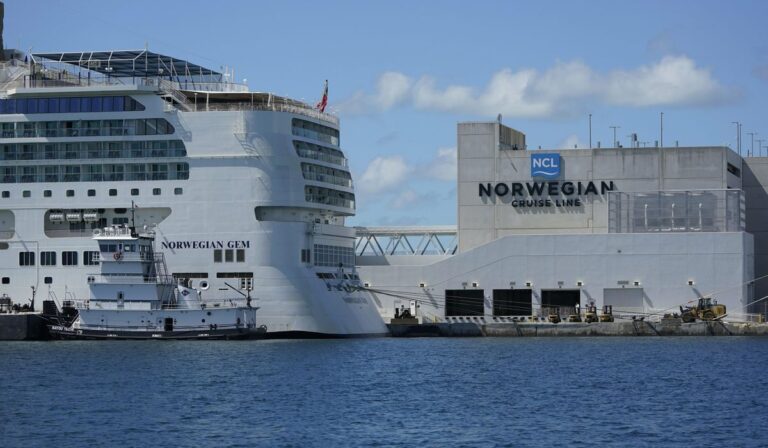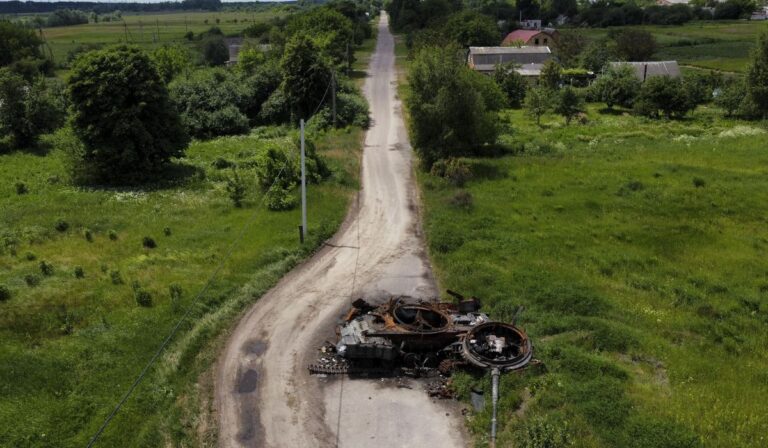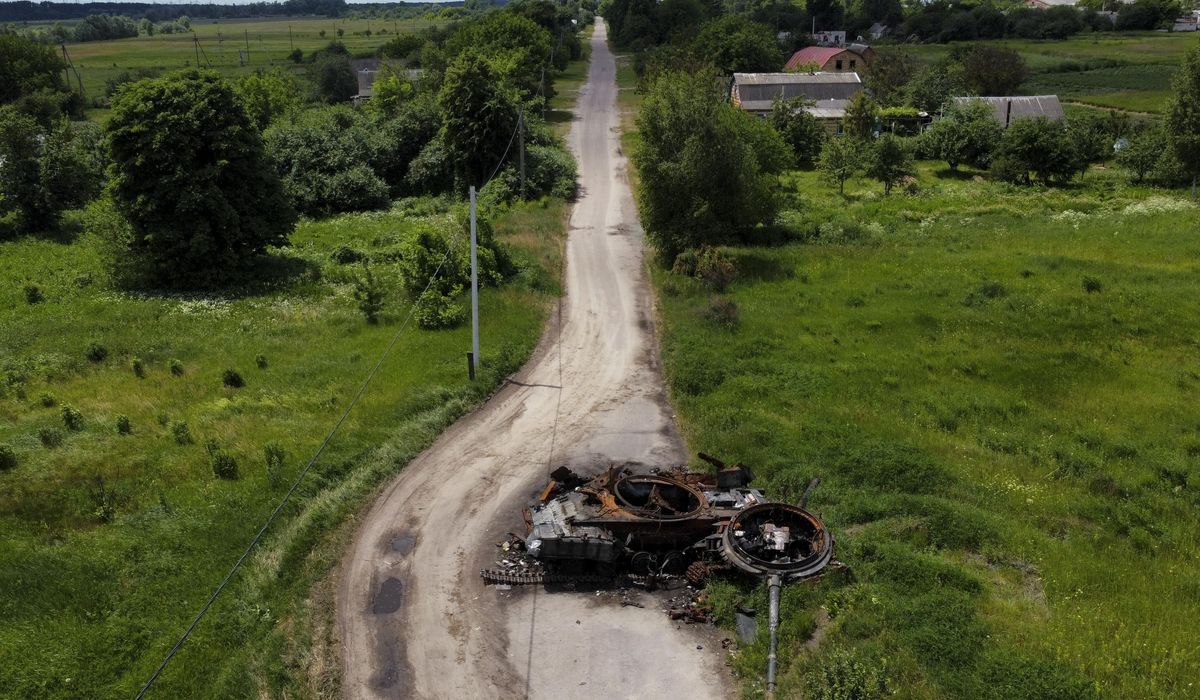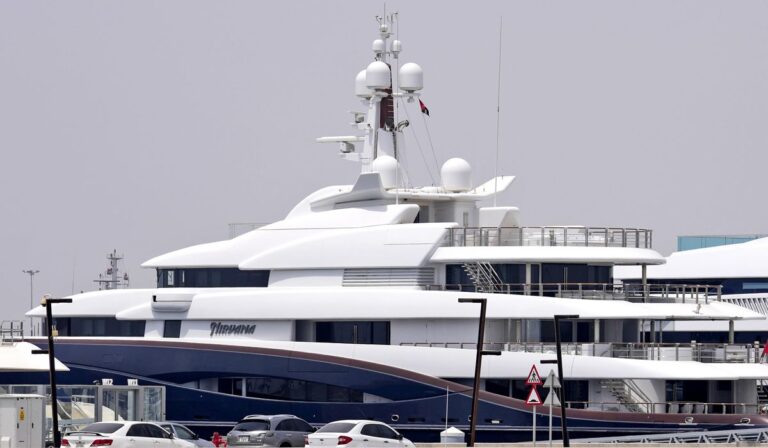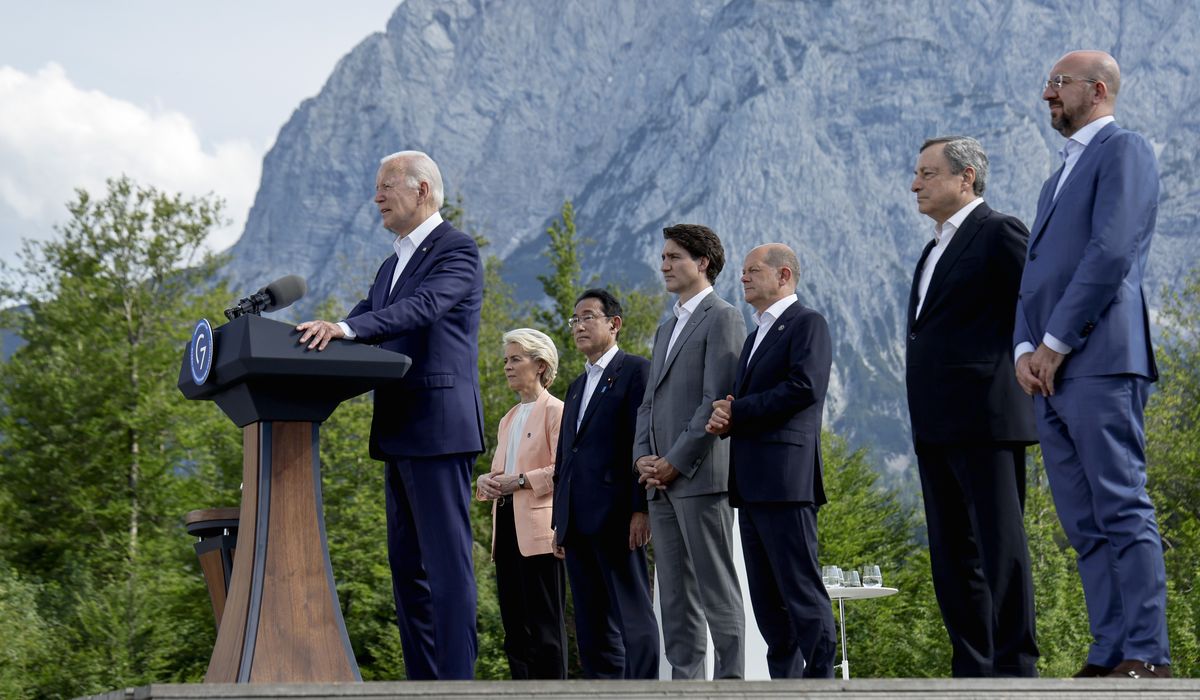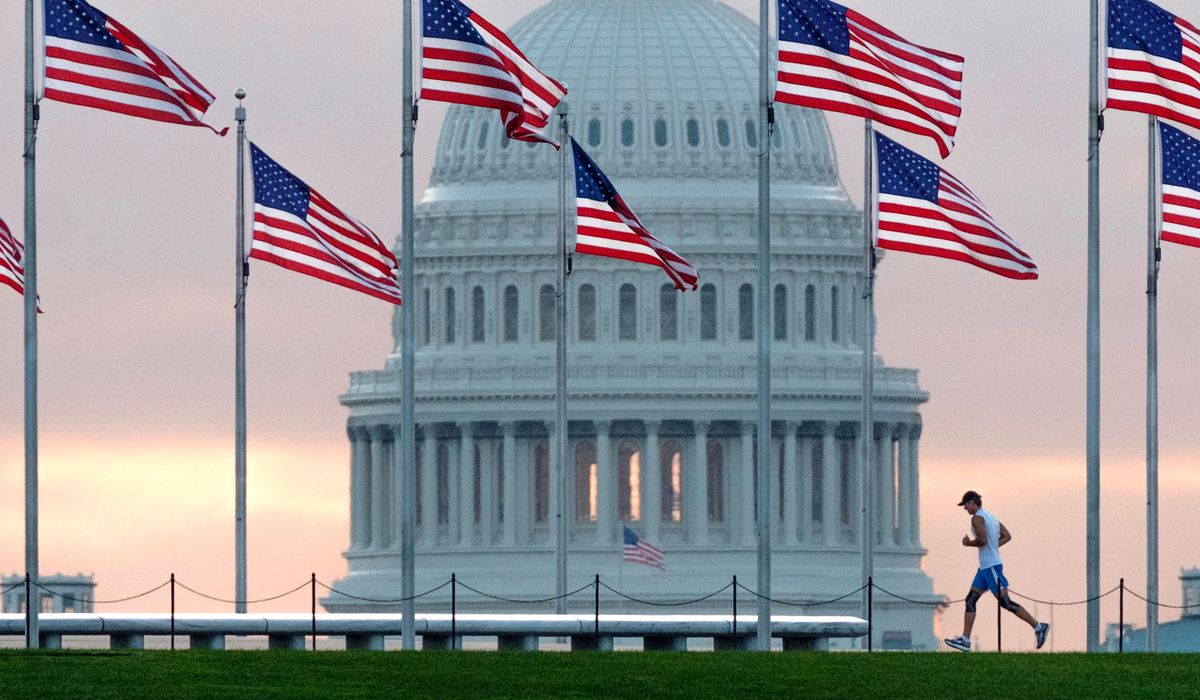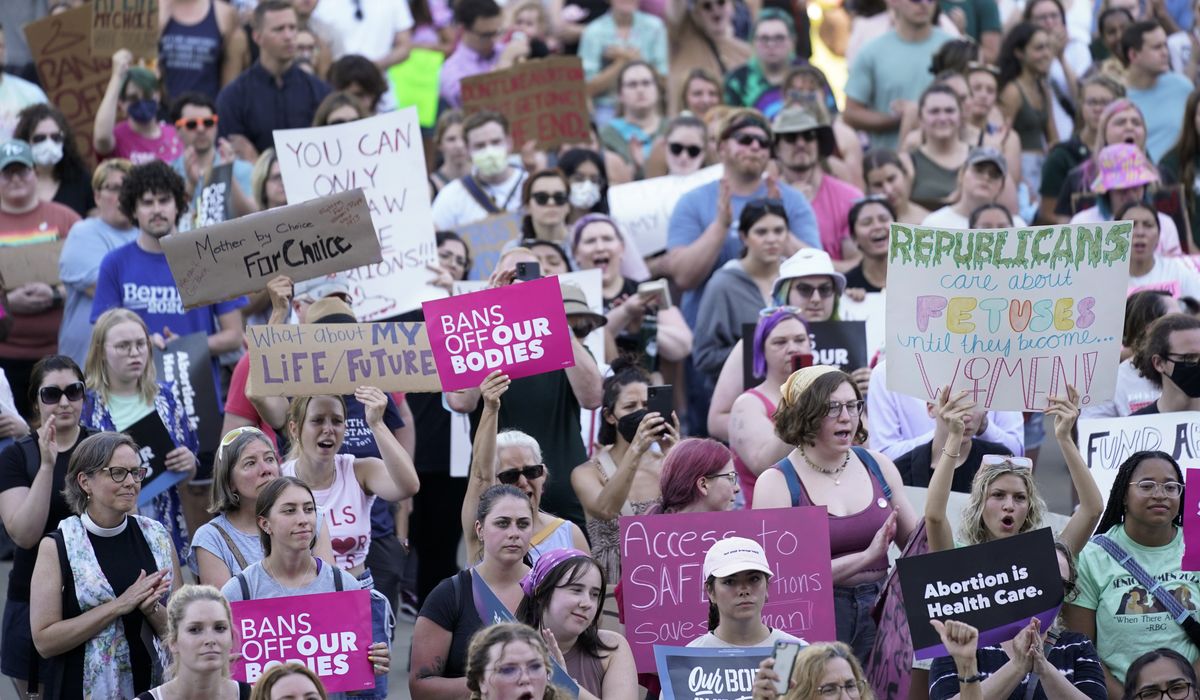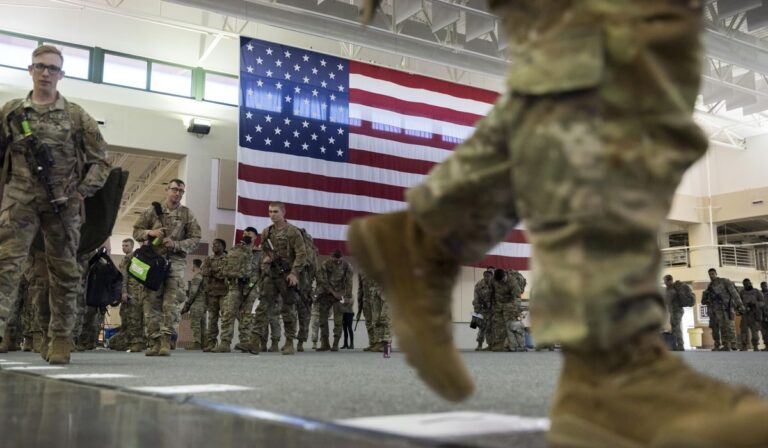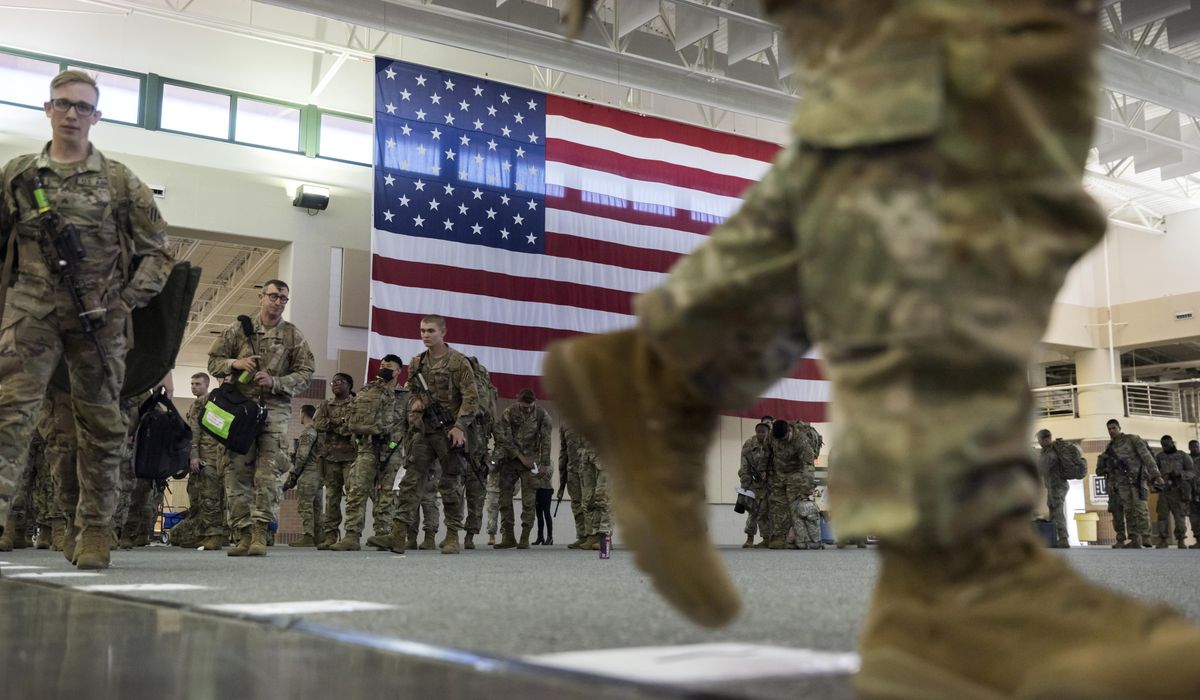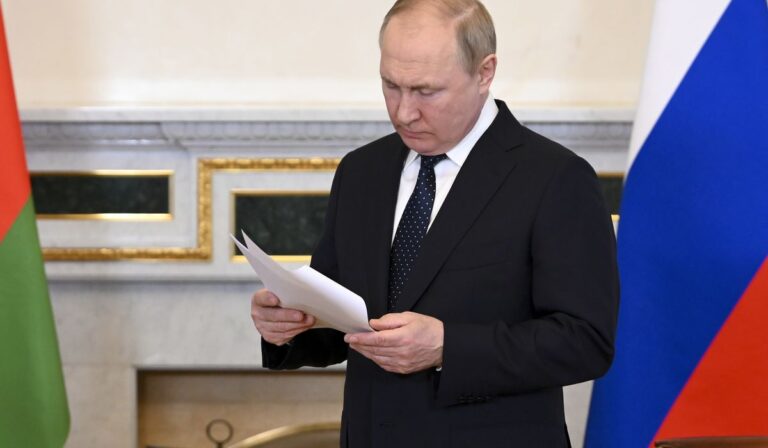President Biden sought Sunday to rally America’s major allies to stay unified against Russia’s war in Ukraine while also announcing a new global infrastructure investment partnership among several of the world’s largest U.S.-aligned economies to counter China’s rising influence over Africa, Asia and Latin America.
The infrastructure investment partnership, which has already drawn criticism for being a rehash of past initiatives that have struggled to gain global traction, was the centerpiece of opening meetings of the annual Group of Seven (G-7) leaders summit occurring this week in Germany.
Mr. Biden, who appeared Sunday in the Bavarian Alps alongside German, French, British, Canadian, Italian and Japanese counterparts, said the investment partnership will “mobilize” $600 billion in “public and private capital” from the G-7 countries for projects that will show developing nations around the world “the concrete benefits of partnering with democracies.”
The dollar figure is higher than anything previously announced by Western powers to counter the hundreds of billions China has doled out in infrastructure loans globally over the past decade.
Still, Sunday’s announcement risked being overshadowed by the more immediate crisis stemming from Russia’s ongoing war in Ukraine.
Aides said much of the behind-the-scenes action at the G-7 so far has focused on preventing economic fallout from the Ukraine war that could fracture the global coalition currently imposing sanctions on Russia.
SEE ALSO: As U.S. troops reach 100k in Europe, questions mount over endgame, long-term effects
Concerns about the coalition have grown in recent weeks amid fears Moscow could spark a widening energy crisis by cutting natural gas flows to Europe.
“We’ve got to make sure we have us all staying together,” Mr. Biden said during an initial round of public remarks Sunday after a pre-summit sit-down with German Chancellor Olaf Scholz, who holds the G-7′s rotating presidency and is hosting the gathering at Elmau Castle.
“You know, we’re gonna continue working on economic challenges that we face, but I think we get through all this,” the president said.
British Prime Minister Boris Johnson called on other G-7 leaders not to give in to “fatigue” over Russia’s invasion of Ukraine, even as Moscow appeared to be trying to preempt the summit and a major NATO leaders gathering slated to occur later in the coming week by increasing the pace of attacks in Ukraine.
Russian forces unleashed a barrage of missile strikes through the weekend in Ukraine, with the G-7 countries responding by announcing plans to impose a ban on gold from Russia.
A formal announcement on the gold ban is expected to occur by Tuesday before the G-7 leaders wrap their summit ahead of the NATO gathering, which begins Wednesday in Madrid.
SEE ALSO: Ukrainian fighter pilots in Washington to appeal in person for advanced aircraft for war effort
Mr. Biden is slated to attend the NATO summit, at which Ukraine is expected to take center stage alongside discussions of Finland and Sweden joining the alliance, despite ongoing resistance to their bid by Turkey.
In the interim, officials noted Sunday that gold is Russia’s second-biggest export after energy, asserting that banning imports would make it more difficult for Moscow to participate in global markets.
Mr. Johnson said the ban will “directly hit Russian oligarchs and strike at the heart of Putin’s war machine.”
“Putin is squandering his dwindling resources on this pointless and barbaric war. He is bankrolling his ego at the expense of both the Ukrainian and Russian people,” the British prime minister said. “We need to starve the Putin regime of its funding.”
Rebranding ‘B3W’
The U.S. and fellow democracies have been trying for the past several years to come up with an effective economic strategy for countering the rising influence had with governments across much of the developing world by China and the ruling communist party in Beijing.
The G-7 partnership announced Sunday responses to China’s so-called Belt and Road Initiative, which Western officials have argued fosters autocracies in the developing world.
The former Trump administration in Washington often criticized the Chinese program as “predatory,” with the goal of burdening economically weaker nations with debt that might later be relieved in exchange for Chinese government access to natural resources and other forms of influence.
But U.S. officials have struggled to offer concrete alternatives. The Trump administration ushered in reforms that included the creation of the U.S. International Development Finance Corp., backed with $60 billion to inspire private investment in developing countries worldwide.
Mr. Biden has tried to expand the approach via the G-7, announcing the so-called “Build Back Better World” (B3W) initiative at last year’s summit to try to inspire private investment from wealthy democratic countries toward infrastructure and other needs in the developing world.
Sunday’s announcement was largely a reframing of the B3W initiative under a different name and it remains to be seen whether the president has the geopolitical capital to steer the initiative toward tangible results.
Mr. Biden vowed that the U.S. will “mobilize $200 billion in public and private capital over the next five years” for the new initiative, now formally called the “Partnership for Global Infrastructure.”
The president said the partnership will steer money toward areas “critical to sustainable development and to our shared global stability: health and health security, digital connectivity, gender equality and equity, climate and energy security.”
Among the first initiatives are a $2 billion solar farm investment in Angola in Southwest Africa, $320 million for hospital construction in Ivory Coast in West Africa, and $40 million to promote regional energy trade in Southeast Asia.
Mr. Biden claimed some $335 million in private capital is being mobilized to supply secure network equipment in Africa, Asia, and Latin America. He also said the U.S. government has supported the successful bid by an American company, SubCom, for a $600 million contract to build a global subsea telecommunications cable.
“This cable will stretch from Southeast Asia, through the Middle East and the Horn of Africa, to Europe,” the president said. “This will be essential to meeting the growing demand for reliable security, high-tech connectivity in three key regions of the world.”
Promising billions
The administration has done little to specify how it will inspire investments worth hundreds of billions of dollars from private corporations.
Some analysts are skeptical that the U.S. appeal for private sector money from American and G-7 companies will yield substantial results.
“The re-pitch of U.S. engagement on infrastructure is valiant but faces two big challenges,” says Satu Limaye, who heads the Washington office of the East-West Center and the Asia Matters for America initiative.
“U.S. private money has lots of places to seek returns, and infrastructure abroad does not so far appear to be very attractive,” Mr. Limaye told The Washington Times. “Part of the reason it is not attractive is that countries who seek major spending on infrastructure are hardly paragons for private sector investment attractiveness in the infrastructure space.”
Despite such concerns, Mr. Biden appeared to be in full pitch mode Sunday, presenting the new G-7 infrastructure investment partnership as a money maker for everyone involved.
“I want to be clear: This isn’t aid or charity; it’s an investment that will deliver returns for everyone, including the American people and the people of all our nations,” the president said in Germany. “It’ll boost all of our economies, and it’s a chance for us to share our positive vision for the future.”
Mr. Biden seemed to avoid framing the initiative as an effort to contain China, apparently out of concern that doing so might make the G-7 appear to be on the defensive globally.
However, the president’s top aides have made it clear that the new investment partnership is all about countering China.
National Security Adviser Jake Sullivan told an event early this month at the Center for a New American Security think tank in Washington that the G-7 initiative centers on growing “global infrastructure — physical, health and digital infrastructure that we think can provide an alternative to what the Chinese are offering.”
While the president avoided mentioning China by name in his own remarks on Sunday, he stressed that the investment partnership centers on democracies supporting each other.
“When democracies demonstrate what we can do, all that we have to offer, I have no doubt that we’ll win the competition every time,” Mr. Biden said.


